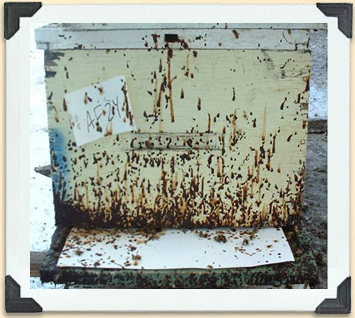The Keeper

Fecal staining on the exterior of a hive box is an obvious sign of nosema.
© University of Manitoba
Nosema Virus
Nosema disease, a parasitic fungus, is a major concern for Canadian beekeepers. It's caused by two different species: Nosema apis and Nosema ceranae. The disease affects the gut of the bee, reducing its ability to absorb nutrients and therefore significantly shortening its life. It's contagious and is spread to other bees through contaminated feces. The disease usually spreads during winter months when bees cannot leave the hive for cleansing flights.
Nosema apis has long been a problem for beekeepers and it can be treated; however, Nosema ceranae is a new disease and, as yet, little is known about it. Diarrhoea is a symptom of Nosema apis, but not of Nosema ceranae, making it more difficult to detect.


